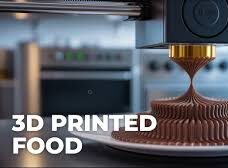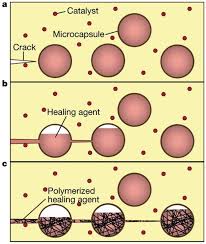Introduction: The Future Is on Your Plate
Once upon a time, the idea of 3d-printed food sounded like something straight out of a science fiction novel or a Star Trek episode. Today, thanks to rapid advances in food technology, 3D-printed meals are no longer futuristic fantasies—they’re becoming part of real-world kitchens. Even better? They’re not just edible; they’re delicious.
From Michelin-star restaurants experimenting with precision-printed desserts to NASA planning space-friendly meals for astronauts, 3D printing is redefining what’s possible in food creation. But beyond the “wow” factor, this technology is also addressing some of the biggest challenges in the food industry: sustainability, personalization, and accessibility.

In this blog, we’ll explore three game-changing 3D-printed food innovations that are revolutionizing the way we eat.
1. Customized Nutrition: Printing Food That Fits YOU
One of the biggest promises of 3D-printed food is its ability to personalize meals based on a person’s exact nutritional needs. Instead of buying generic protein bars or multivitamins, imagine printing a snack that has just the right amount of carbs, protein, fiber, and vitamins—tailored for your body.
Real-World Example: Nourish3D
UK-based startup Nourish3D is already making this a reality by printing chewable vitamin stacks customized for each customer’s health goals. Users fill out an online quiz, and the company prints supplements to match their dietary needs.
Why It Matters
- Personal health: Perfect for athletes, elderly patients, or those with medical conditions.
- No food waste: Only the exact amount of each ingredient is printed.
- Better taste: Nutritional foods can be flavored to suit personal preferences.
Imagine a hospital where every patient’s meal is freshly printed according to their recovery plan—or a fitness center where you print your post-workout snack on demand.
2. Gourmet Creations: Michelin-Quality Food at the Push of a Button
3D printing isn’t just for nutrition—it’s also for culinary artistry. Top chefs are now experimenting with intricate designs and textures that would be nearly impossible to create by hand.
Real-World Example: Food Ink
Food Ink is a pop-up restaurant that serves entire 3D-printed meals—from appetizers to desserts. Every dish is not only visually stunning but also crafted with high-quality ingredients like purees, chocolate, and fresh vegetables.

Why It Matters
- Design freedom: Chefs can create patterns, layers, and shapes beyond traditional cooking methods.
- Consistent quality: Every printed portion is identical in taste and presentation.
- Food as art: 3D printing allows for merging gastronomy with design, creating Instagram-worthy experiences.
Soon, fine dining could mean downloading a chef’s latest “food file” and printing it right at home.
3. Sustainable Solutions: Printing Meat Without the Animal
The meat industry is a major contributor to greenhouse gas emissions, and plant-based alternatives often struggle to mimic the texture of real meat. Enter 3D-printed meat—a solution that promises both taste and sustainability.
Real-World Example: Redefine Meat
Israeli company Redefine Meat uses plant-based ingredients and 3D printing to replicate the texture and mouthfeel of steak, complete with the marbling of fat. Their creations have been served in restaurants worldwide, and most customers can’t tell the difference from real beef.
Why It Matters
- Eco-friendly: No animals harmed, and significantly lower environmental impact.
- Scalable: Can produce large quantities without relying on traditional farming.
- Customizable taste: Chefs can tweak fat content, seasoning, and even shape.
This technology could help feed a growing population without putting more strain on the planet’s resources.
How 3D Food Printing Works
At its core, 3D food printing works just like traditional 3D printing, but with edible materials. Instead of plastic filaments, the printer uses purees, doughs, chocolate, or powdered ingredients mixed with liquids.
Step-by-step:
- Design the meal using software or download a recipe file.
- Load the printer with edible “ink” (cartridges filled with ingredients).
- Print in layers according to the design.
- Cook if needed—some foods require baking or heating after printing.
Benefits of 3D-Printed Food
- Personalization: Every bite can be adjusted for dietary needs.
- Zero waste: Only the necessary ingredients are used.
- Accessibility: Could help feed people in remote areas or space missions.
- Innovation in taste & design: Opens creative possibilities for chefs.
Challenges to Overcome
While 3D-printed food is exciting, it’s still facing real-world hurdles:
- High cost of printers (though prices are dropping).
- Limited ingredient range (some textures are hard to replicate).
- Public perception—convincing people it’s safe and tasty.
- Speed—currently slower than traditional cooking.
The Future of 3D-Printed Meals
Looking ahead, we could see:
- Home kitchen printers for daily meals.
- Space missions where astronauts print fresh food mid-journey.
- Disaster relief using portable printers to feed survivors.
- Virtual restaurants selling downloadable meal designs.
The shift might feel strange at first, but just like frozen food and microwave ovens once did, 3D-printed meals could become a normal part of modern dining.
Final Bite
3D-printed food is not just a tech gimmick—it’s a transformative approach to how we think about cooking, eating, and sustainability. With customized nutrition, gourmet artistry, and sustainable meat alternatives, the future of food might just be printed, plated, and devoured… all at the push of a button.





